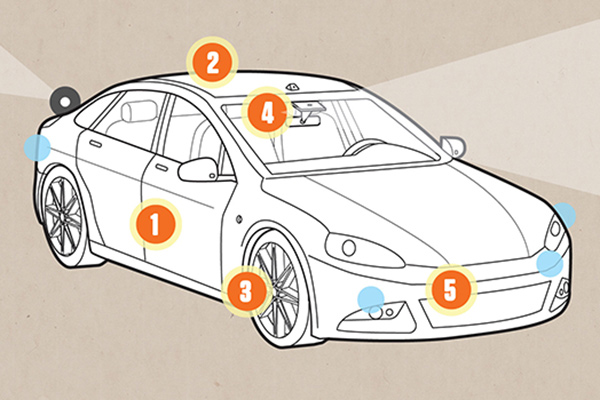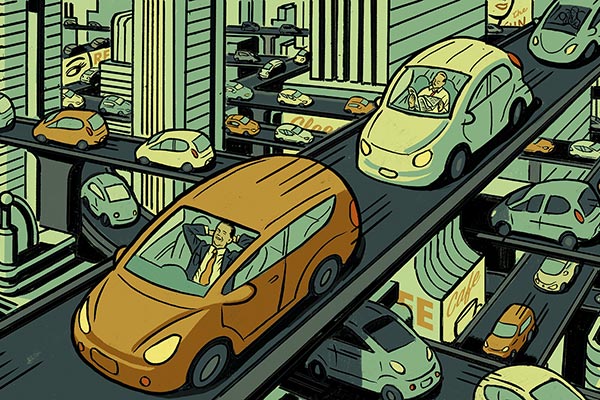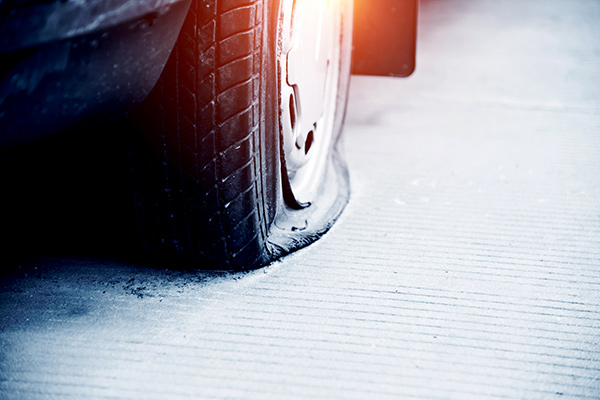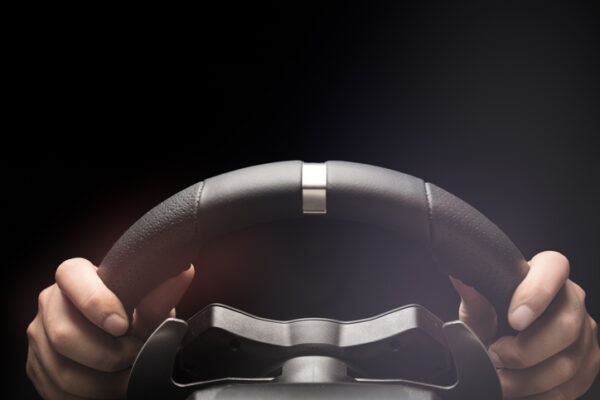Autonomous cars are already a reality—at least, they are in Phoenix, Ariz., where an autonomous vehicle company has partnered with a rideshare service. Its cars are already picking up and depositing riders—all without a human driver at the wheel.
While this has been a limited-scale project—in a city with normally good weather—being chauffeured around without a chauffeur is closer to becoming a common occurrence. The National Highway Traffic Safety Administration says that fully automated cars and trucks are on their way, 29 states have enacted legislation for allowing autonomous vehicles on their roads, and the U.S. Department of Transportation (DOT) recently announced plans to ease federal regulations surrounding autonomous vehicles.
The DOT’s rationale? Safety. As much as 94 percent of all serious automobile crashes are attributed to human error. Unlike human drivers, autonomous vehicles are not prone to distraction, fatigue or impaired driving.
So why aren’t we all buzzing around town in driverless vehicles? Why is it taking so long?
The Obstacles For Self-Driving Cars
There several issues that still need to be ironed out, say experts.
Weather
Just like a human driver, weather affects a driverless vehicle, says Melba Kurman, co-author of Driverless. If we can’t see in the fog, a camera can’t see in the fog, either—even an advanced camera that performs 360-degree scans up to 20 times per second and has deep-learning software to “teach” it to recognize objects.
However, that’s just one of the tools that autonomous vehicles use to “see.” There’s also LiDAR (light detection and ranging)—a sensing system that uses a spinning laser beam and calculates how long it takes for light to hit and then reflect back from an object. Cars also use radar, which measures radio waves to detect an object’s bearing, range and velocity.
Possible solution: Whether it’s LiDAR or better cameras that are used as the primary visual sensor, says Kurman, they are all feeding data into neural deep-learning networks and making autonomous driving systems smarter and better. “When companies are ready to invest in training driverless vehicles to handle snowy or foggy road conditions,” she says, “the cars’ performance will exceed that of a human driver.”
Liability & Insurance
This will be tricky, Kurman says, because if no one’s driving, who’s at fault if there’s an accident?
Possible solution: Policies and regulations will have to change to support the new technology—but they will, says Kurman. “Government and insurance companies will figure it out—after all, they’ve adapted to new technologies in the past.”
Non-standardized Road Markings
Signs and lights can vary by state—or even by municipality. Some traffic signals are horizontal, for example, while others are vertical. Plus, signs that mark the miles or exits along the highway aren’t the same from state to state, and if they’re damaged or old, they could be tough to read. If the car hasn’t learned all of the variables, there could be safety ramifications.
Possible solution: With artificial intelligence (AI) technology, computer-run vehicles are increasingly capable of learning at a rate far faster than humans. Eventually, cars will become smart enough that these variations won’t matter, says Paul Godsmark, chief technology officer of CAVCOE (formerly the Canadian Automated Vehicles Centre of Excellence), an Ontario-based nonprofit.
Recognition Of Objects
Road signs are one thing. But distinguishing between, say, a cat and a cardboard box—or a child and a small tree—can be tricky, and Godsmark says that companies are still working out kinks in image identification and classification.
Possible solution: With continued training, AI is getting better and better at recognizing objects—and is already better than humans in some circumstances, Godsmark says. AI is developing at an exponential rate, and any image-class problem that exists today might not be a problem in the near future.
Potential For Hacking
The cars’ computerized systems and the network of vehicles means that a security breach could have serious consequences. “When I go through things that would keep me up at night, this is at the top of the list,” Godsmark says.
Possible solution: “It gives me comfort,” Godsmark says, “that the tech companies leading autonomous-vehicle technology are world leaders in cyber security.”
Adoption Hesitancy
The handful of accidents involving autonomous vehicles have received lots of media attention; this could make people hesitant or unwilling to embrace autonomous vehicles.
Possible solution: If, say, 75 percent of people are unwilling to ride in a driverless vehicle, that’s good news, says Godsmark, because it means that 25 percent already are. “It’s a new technology and people are bound to be skeptical,” he says. “But once people try it, they’ll be won over.”
The Benefits Of Self-Driving Cars
Once the obstacles are overcome, these will be some of the benefits.
- Greater safety, less congestion. Driverless cars mean potentially fewer accidents, which can cause traffic backups.
- Environmentally beneficial. Autonomous vehicles will likely be smaller and electric-charged, rather than outfitted with fossil-fuel engines.
- Enhanced productivity. While you’re being driven to your destination, you can catch up on email and work calls—or do neither and take a nap.
- Greater independence. Older people and those with mobility issues will be able to remain self-sufficient by being able to easily travel to places like the grocery store, the movies or a restaurant.
Self-Driving Cars: How They Work
 You climb into your car, punch your destination into the GPS…and then curl up under a blanket for a nice nap while your vehicle drives itself there.
You climb into your car, punch your destination into the GPS…and then curl up under a blanket for a nice nap while your vehicle drives itself there.
Sound like a dream? Not quite.
With several manufacturers now developing technology for self-driving cars, many advancements are expected in the next few years. In fact, some experts have predicted that in our lifetime, we could be living in a world in which most cars on the roads will be driverless.
The basic components of self-driving cars already exist—they just need to be refined. Here’s a look at how most autonomous vehicles are wired.
1. Onboard Computer
Uses a neural network to process LIDAR and radar inputs.
2. Global Positioning System
GPS signals are combined with measurements from onboard meters for advanced location accuracy.
3. LIDAR Sensors
LIDAR (light detection and ranging) uses pulses of light to map nearby cars and objects
4. Hi-Def Cameras
Provide wide-range visibility to detect and identify traffic lights and road signs.
5. Forward-Facing Radar
Can detect other cars through inclement weather.
Wherever automotive technology goes, we’ll be there with solutions and savings. Speaking of which, now’s a great time to get a quote on auto insurance from GEICO and see if you could save!
Read more: 5 Hi-Tech Safety Features To Look For In A New Car
By Ellise Pierce and Mark Yarm










Kim Y N says,
Thanks. it really helps for my essay
Krishna Harish says,
haha ?
Angel says,
No mention of how Geico will handle the major shift this article is predicting.
Rhodesia says,
I do believe the self driving cars are a technological advancement that will benefit us now
and in the future.,but until it becomes more common, the first time some one who is driving
the traditional non self driving automobile see’s a self driving vehicle , they will be so
distracted by observing the self driving car , that the driver of the traditional non self
driving car will be more prone to having an accident .What if there is a satellite or computer
glitch, will we have these self driving cars stopped in traffic,especially on the highways.If
these self driving features are used all the time , what happens when these people are now
forced to have to drive the so called self driving vehicles, and their driving skills are
lacking.There are so many scenarios for better or worse outcomes. It could definitely help
people who are blind, and legally blind individuals have more freedom,especially in remote
suburban areas.
Maryann Jurek says,
It’s a bit weird, but I hope a lot safer. We have too many speeders on the road that cut in and out; maybe that will stop. How will these cars know when a car in the next lane needs to change lanes? Will it slow down or speed up? Will it know when someone is crossing the street; like a small child running after a ball etc.?
I remember years ago a magazine article on these cars; there was a computer that you mapped out the route and the car took you there. A lot of ideas from the passed 50-60 years ago are coming true! It will be strange driving next to a car driving by its self.
Penny Asher says,
I’m more interested in learning how purchasing a self-driving car impacts my insurance policies and rates? How is GEICO going to protect my self-driving car and price my insurance? Or perhaps there’s no more need for auto insurance since self-driving cars are supposed to be 99.9% safe?
Aida says,
I would feel safe with this computized self driving car. If the astronauts can be sent to space and return on auto pilot. Why can’t we have our vehicles work just to drive on the road and use technology do this. .
Sorensonian says,
Could potentially be a good solution for drunk driving.
Harry says,
I think it can also be risky when there is bad weather involved. Would you put your life and yours on the hand of this technology? I’m not sure if I can trust this. I’d stick to the traditional self-driving way for now.
KEVIN L. GREEN says,
In California the self drive car of tomorrow will be the vehicle to manuever on the freeways here in California. Nobody will be in a hurry. You do not drive, just read. No , traffic, no worry, no fuss.
Andrea says,
Scary. I’m not sure I’m ready for this technology.
Jim says,
In today’s terror environment, it seems to me to be a clash of the midevils and the techno wizards who when put in the same realm will have to play hardball to protect the public. Given the sensitive nature of the technology, I fear the infrastructure for such a system will become an easy target. I will be hanging on to my car for years to come.
Kent Newman says,
Interesting. Like everything new, it will be tested, doubted, even feared, I can envision the several situations in which it could prove useful, even bring about interest sufficient enough to consider a ‘try’ on some mode of public travel available.
I have had new vehicles over the past several years. My new Prius, complete with the new gear shift – barely touch, and let go – proves somewhat daring, in these early stages, and adequate for me, thank you.
Kent Newman says,
My new Prius gear shift is an adequate challenge. Only my interest arena is invaded by this Passenger Seat innovation, not my bill fold.
K says,
I think that “self driving cars” is a crazy and very dangerous idea…is this a joke? What am I missing
Paul Heldman says,
FYI
Cere says,
I’m an older adult, and already have problems with computerized TV’s, new computer operating systems, etc. I’m afraid I may not be able to figure out how an automated car works. Also, I don’t believe I would trust it! Computers get viruses, or just simply malfunction for reasons of their own. Won’t these cars do the same? I still have good reflexes and no accidents in over 30 yrs. I believe I’ll continue trusting my own judgement rather than a computerized car.
Norman Clark says,
I am 87 and I hope I will be able o see this new method of driving…
G. Quarles says,
I’m rooting for you, Norman!